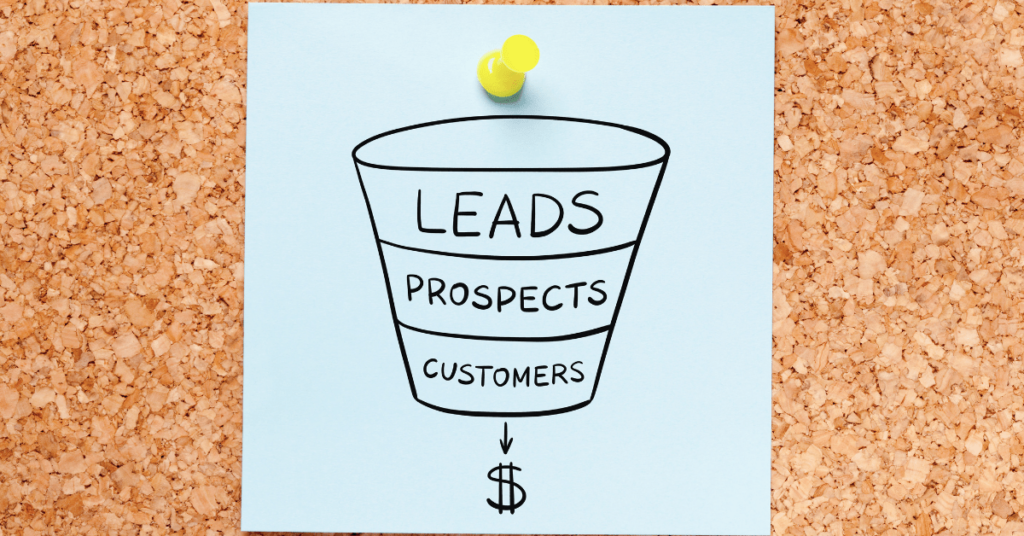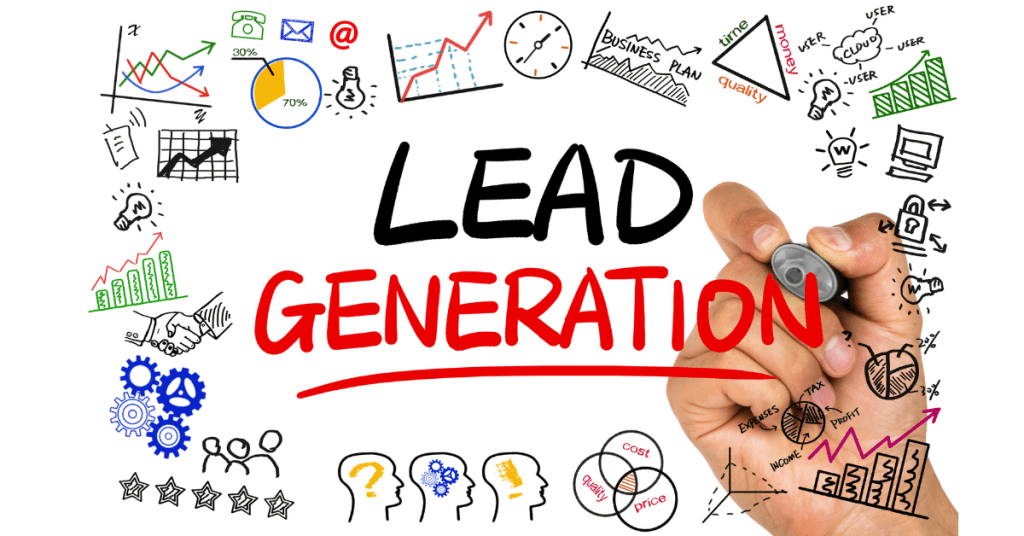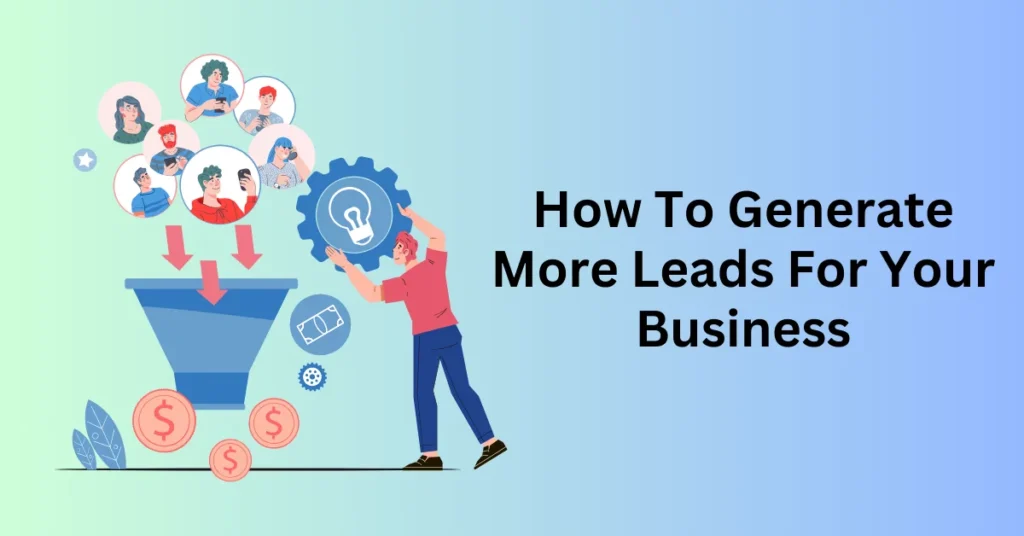Achieving success in business goes beyond simply having a great product. Instead, it requires establishing a genuine connection with individuals who are interested in making a purchase. The real challenge lies in identifying and engaging these potential buyers. This is where understanding and leveraging sales leads becomes crucial.
A sales lead is essentially a potential customer who has shown some level of interest in your product or service. Besides, the key to business success is to transform these leads into dedicated buyers through strategic engagement and effective marketing.
In this guide, we’ll delve into what sales leads are, their significance in the sales process, and how you can strategically harness their potential to boost your eCommerce business. In addition, from identifying high-quality leads to nurturing them through the sales funnel, we’ll explore actionable steps to convert interest into commitment and drive your business growth.
Create Your Lead Generation Funnel Today
What is a Lead

In sales, a lead is an individual or organization that has expressed some degree of interest in acquiring your products or services. Typically, these leads are part of your target audience. It’s the specific group of people you intended to reach when you developed your product, set its price and launched your marketing campaigns.
Sales professionals often categorize leads to tailor their approach effectively:
Hot Lead:
A lead with a strong and immediate interest in making a purchase is often referred to as a “hot lead.” They exhibit high motivation and are likely close to finalizing their decision. For example, in the business-to-consumer (B2C) sector, a hot lead might be someone who frequently interacts with your social media posts or visits your website before. They may also have added items to their online shopping cart.
In the business-to-business (B2B) sector, a hot lead could be a corporate client who has attended your sales presentations. Alternatively, they might have been referred to you by trusted industry contacts.
Warm Lead:
This lead is moving toward making a purchase but is still in the evaluation phase. They show interest but may need further information or persuasion before committing. A warm lead could be someone who has engaged with your content or shown interest in your offerings but has not yet taken significant steps toward a purchase.
Cold Lead:
This type of lead appears unlikely to convert into a sale. They might have expressed initial interest but have become disengaged or shown no further inclination to proceed with a purchase.
Your sales strategy should adapt to each type of lead. Besides, you can focus your resources and efforts on hot leads that are more likely to result in sales with minimal expenditure. For warm leads, provide additional information and nurturing to guide them toward a purchase. For cold leads, evaluate if there are opportunities to re-engage or shift your focus to more promising prospects. By tailoring your approach to the lead’s level of interest and engagement, you can optimize your sales efforts and achieve better results.
Different Leads For Your Business
As businesses work to generate leads, they often group potential customers in two different ways. Qualified leads versus unqualified leads, and sales qualified leads versus marketing qualified leads. This process is known as lead scoring. This is where a numerical value is placed on leads to help sales reps prioritize those that are most likely to generate a sale.
Qualified vs. Unqualified leads
The broadest level of lead scoring is categorizing leads as either qualified or unqualified.
- Qualified leads. These leads were scrutinized by the company’s sales team, the marketing team, or both, and are considered the strongest of leads. These potential customers may already be in the company’s sales funnel after showing a strong inclination to buy.
- Unqualified leads. An unqualified lead has only a vague interest in your product or services. They are aware of your brand but lack a full sense of what you sell. Or, they may understand your brand but show little interest in buying.
Sales Leads vs Marketing Leads
The next level of lead qualification splits qualified leads between your marketing and sales departments.
- Sales qualified leads (SQL). A sales-qualified lead is a person the sales department views as a very likely customer. A sales-qualified lead interacts readily with company sales reps, responding to phone calls, emails, or a call to action on your company’s website. They seem on the cusp of making a purchase.
- Marketing qualified leads (MQL). A marketing-qualified lead is someone who shows interest in the business’s offering but is not yet ready to buy. They probably have seen content created by the company’s marketing team, or perhaps they discovered your company based on their own organic interest. Your marketing and sales teams will need to work to convert them into customers.
Strategies for Leads Generation
Sustaining a small business successfully involves balancing both inbound and outbound lead generation strategies. Inbound lead generation focuses on creating campaigns that attract potential customers to you, while outbound lead generation involves proactively reaching out to potential leads. Here are four effective strategies for generating leads:
1. Create and Share Relevant Content
Generating leads through content marketing involves capturing the organic interest of potential customers by providing valuable and relevant information. Businesses often achieve this by maintaining an SEO-optimized blog on their website, which helps attract visitors from search engine results pages (SERPs). Additionally, podcasting and video content on platforms like YouTube can also engage and inform your target audience. This strategy not only positions your business as an authority in your industry but also connects you with individuals who are already interested in your offerings.
2. Build a Social Presence
Social media platforms offer a powerful avenue for lead generation. Establishing a presence on popular social media channels such as Facebook, Instagram, and TikTok allows you to reach a broad audience. Effective social media marketing involves creating posts that provide valuable information, engage your target audience, and foster community. Additionally, social media eCommerce enables you to sell products directly through these platforms, tapping into a vast pool of potential leads—over 4.2 billion people use social media globally. Notably, 76% of consumers have purchased products they discovered through social media posts.
3. Nurture Your Existing Customers
Leveraging your existing customer base is a smart strategy for generating new leads. Customers who have previously made purchases and expressed satisfaction with your products or services are prime candidates for repeat business. Engage these customers with targeted email newsletters that highlight new offerings, special discounts, and updates about your company. Additionally, encourage your satisfied customers to follow you on social media for real-time updates and exclusive deals. By nurturing relationships with existing customers, you can drive repeat sales and generate valuable referrals.
4. Reviews and Referrals
Reviews and referrals from existing customers can serve as powerful tools for attracting new leads. Positive reviews provide social proof of your product’s quality and can significantly influence the purchasing decisions of prospective customers who may be unfamiliar with your brand. While personal referrals are highly effective, online reviews also play a crucial role—84% of shoppers consider online reviews to be as trustworthy as personal recommendations. Encourage satisfied customers to leave reviews and share their positive experiences, thereby enhancing your credibility and attracting new business.
By implementing these strategies, businesses can effectively generate leads and build a steady pipeline of potential customers, ensuring sustained growth and success.
Lead Qualifications
Lead qualification is a critical process that helps businesses determine which potential customers are most likely to convert into paying clients. This process is primarily managed by the sales department but often involves insights and data from the marketing team. Lead qualification is largely driven by the customer’s position in your sales funnel, which is divided into three key stages:
Sales Funnel Stages
- Top of the Funnel (ToFu): At this initial stage, leads are just becoming aware of your business. They may have encountered your advertising, heard about your brand, or come across your content, but they are not yet ready to make a purchase. These leads are often classified as Marketing Qualified Leads (MQLs). The goal at this stage is to engage these leads further, nurture their interest, and guide them toward the next stage of the funnel.
- Middle of the Funnel (MoFu): Leads in the middle of the funnel have demonstrated a higher level of engagement. They may have visited your website, interacted with product pages, engaged with your social media content, or even reached out to your sales team. While they have not yet made a purchase, their actions indicate a strong intent. The focus here is on nurturing these leads by providing valuable information, addressing their questions, and moving them closer to making a purchase decision.
- Bottom of the Funnel (BoFu): Leads at the bottom of the funnel are the most promising. They are ready to make a purchase. At this stage, they have expressed clear intent and are likely comparing options or seeking final details before committing. The objective now is to facilitate their purchase decision by offering compelling offers, addressing any remaining concerns, and ensuring a smooth purchasing process.

Create Your Lead Generation Funnel Today
Lead Scoring Systems
To efficiently manage and prioritize leads, many businesses use a lead scoring system. This system assigns numerical values to leads based on various criteria, such as:
- Behavioural Metrics: Actions taken by leads, such as website visits, social media interactions, email open rates, and content downloads.
- Engagement Levels: How actively a lead engages with your marketing efforts, including responses to campaigns and follow-up actions.
- Demographic Information: Characteristics such as job title, company size, and location that align with your ideal customer profile.
Customer Relationship Management (CRM) Software: CRMs are valuable tools for implementing lead scoring systems. They can track and analyze lead behaviour from initial contact through to purchase, managing data such as website interactions, email exchanges, and sales correspondence. CRMs also archive purchase histories and suggest relevant products to existing customers, enhancing opportunities for repeat sales and upselling. While a CRM is not strictly necessary for lead scoring, it can significantly streamline the process and provide valuable insights to support lead qualification and conversion efforts.
By leveraging lead scoring and CRM tools, businesses can more effectively prioritize their leads, allocate resources efficiently, and increase their chances of converting prospects into loyal customers
How to Nurture Leads
Nurturing a lead is the strategic process of guiding a potential customer from an initial stage of interest to being ready to make a purchase. Effective lead nurturing transforms a prospect with only a vague interest and low purchase intent into a loyal customer. Next, you can even become a promoter of your brand.
Key Strategies for Lead Nurturing
- Direct Communication:
- Personalized Outreach: Engage with leads through personalized communication, such as follow-up emails, phone calls, or direct messages. This direct contact helps establish a relationship, address specific questions, and provide tailored information about your products or services.
- Educational Content: Offer valuable content that educates leads about your offerings. This could include webinars, eBooks, how-to guides, or blog posts that address common pain points and demonstrate the benefits of your products.
- Product Suggestions:
- Behavioural Targeting: Utilize cookies and visitor data to track the behaviour of leads on your website. Based on their interactions, such as product views or searches, serve targeted online ads that showcase products or services they have shown interest in.
- Personalized Recommendations: Use this data to send personalized product recommendations through email or retargeting ads. Besides, this can also help to keep your brand top-of-mind and encourage further engagement.
- Discount Offers:
- Exclusive Discounts: Provide special offers or discounts to entice leads who may be hesitant to make a purchase. This could include limited-time promotions, discount codes, or special deals tailored to their interests and past interactions with your brand.
- Incentives for Action: Encourage leads to take the next step in the sales process by offering incentives such as free trials, samples, or reduced prices for first-time purchases.

Additional Nurturing Techniques
- Lead Segmentation: Segment your leads based on their behaviour, interests, and stage in the sales funnel. This also allows you to tailor your nurturing efforts to address the specific needs and preferences of each group.
- Automated Workflows: Implement marketing automation tools to streamline lead nurturing. Automated email sequences, personalized follow-ups, and targeted content delivery can then help maintain engagement and move leads through the funnel efficiently.
- Engagement Tracking: Continuously monitor and analyze lead interactions to assess the effectiveness of your nurturing efforts. Use this data to refine your strategies and make adjustments based on lead responses and engagement levels.
By effectively nurturing leads through personalized communication, targeted product suggestions, and strategic discount offers, businesses can build stronger relationships with potential customers and increase the likelihood of converting them into loyal clients.
Final Thoughts: How To Generate More Leads For Your Business
Understanding what a lead is and implementing effective strategies for generating more leads is crucial for any business aiming to succeed. Leads are not just potential customers. Instead, they represent significant opportunities for growth, engagement, and conversion. By focusing on lead generation, you can build a robust pipeline of interested prospects who are likely to become loyal customers.
For example, leveraging content marketing is one effective strategy. Additionally, utilizing social media platforms and optimizing your website for lead capture are essential components. Each of these strategies plays a crucial role in attracting and nurturing leads. By continuously refining your approach and analyzing the effectiveness of your methods, you can enhance your lead generation efforts.
Moreover, remember that the journey from lead to customer involves more than just initial contact. It includes understanding their needs, building trust, and providing value at every touchpoint. By mastering these strategies and remaining adaptable to changing market dynamics, you’ll be well-positioned to generate more leads and achieve sustained business success.


